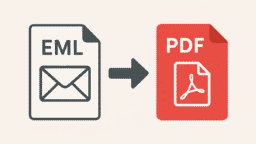According to Statista, there are 4.66 billion active users of the internet worldwide. Meanwhile, Amazon, the largest online selling platform in the world, has 1.1 million active sellers as of 2019. Since the dawn of the digital age, it’s easy to assume that everyone has their fair share of data on the World Wide Web, which can be a scary thought. So, can you imagine just how much information there, online?
While data online and on Amazon can be quite difficult to measure, what’s sure is that they should be given maximum protection and security, especially since it deals with real finances coming in and out of the company’s pocket. When they reach the wrong hands, sellers and data owners can get themselves in serious trouble.
In this article, let’s take a look at Amazon Web Services (AWS), a data storage in the cloud, along with the benefits it brings. We’ll also be filling you in on the cloud security issues you need to actively avoid.
Understanding the important terms

Before we dive deeper into the nitty-gritty of Amazon Web Services and the cloud, let us first know the important terms for you to understand cloud security issues better.
- AWS Security: This refers to the assurance of data protection and security of the service.
- Simple Storage Service/S3 buckets: S3 is AWS’ data storage where all information is stored and protected. The risk for deletion and non-restoration of data is zeroed out because of this storage type.
- Amazon Machine Images (AMI): AMI is an AWS virtual machine that stores data like servers, applications, and operating systems needed to launch Amazon Elastic Compute Cloud (EC2).
- Amazon Elastic Compute Cloud (EC2): This is the AWS function developers use to utilize designs for web-scale computation needed for capacity configuration and attainment.
- Identity And Access Management (IAM): IAM is the AWS cloud provider feature that gives you the power to grant or revoke access to information in the cloud.
- CloudTrail: Amazon CloudTrail allows you to see all activities that occur in your S3 buckets—Application Programming Interface (API) and all data coming in and out of it.
- DDoS Attack: Distributed Denial of Service or DDoS attack occurs when a website is attacked by different devices that generate fake web traffic, making your site unavailable for real users.
- Virtual Private Cloud (VPC): Every user’s space allocation in the cloud allows businesses to operate privately in a shared cloud with all data secured.
- Network Access Control List (NACL): The NACL is the first defense to allow only registered traffic to a subnet level. The registration is determined through the list. Any user on the list has the right to access it.
AWS is a technical area of Amazon, and there are many jargons only an AWS developer and IT experts understand. However, if you plan to use this service, it helps to know some key terms.
Recommended for you: Why Do You Need to Upgrade to Cloud-Based Platforms?
Amazon Web Services (AWS) and cloud security issues

Now, what is AWS? Data storage is an important part of any business as historical, present, and future statistics and business knowledge are used for decision-making. Technology has evolved from storing data to disc drives and desktops to the now-famous and efficient data storage system—the cloud.
The terms mentioned above are all under AWS, Amazon’s cloud computing platform. AWS stores data in the “cloud” instead of a computer or a drive. As a result, the risk of data getting lost or stolen is brought to the minimum. However, there are many other security risks you need to know to protect your data better. Here are the three main problems you should look out for:
1. Keeping the S3 Buckets public

The AWS ecosystem is filled with functions you can configure, allowing key people in your business to access information. As mentioned above, S3 serves as data cloud storage, and you can manage who can access this—whether it will be a private or public cloud.
The problem comes in when the configuration is set to public instead of private. Since all data is stored in the S3, all information, even confidential ones, can now be accessed by anyone.
2. Forgetting to enable CloudTrail

As the name of this feature suggests, CloudTrail tracks everything happening inside the cloud and records all API calls and data being stored in the S3. Imagine forgetting to enable the CloudTrail and losing all the valuable logs that are essential in monitoring your business data.
Aside from losing track of valuable logs, your data also becomes more vulnerable to DDoS attacks as the traffic coming into your website cannot be tracked. You may be experiencing a surge in traffic, but in truth, the visits are coming from fake visitors. Worse, real site visitors won’t be able to access your site.
3. Too many or too few IP addresses are allowed in an AWS VPC

The VPC is your own space in the AWS cloud, and for you to check security, you can enable and disable IP addresses that can access your data. However, it becomes a risk when you’re allowing too much or too few IP addresses—anything extreme isn’t good.
As a result, giving access to more than the allowed IP address will provide unauthorized individuals with visibility to your data. On the other hand, if the IP addresses that should be allowed are restricted, you’ll also run the risk of limiting key players who should have access to your data.
4. Anyone can access AMIs

Ideally, as an AWS customer, you store data in the cloud platform because you want safe data storage and the ability to limit access to confidential information. However, due to AMI configuration mistakes, putting business intelligence defeats its purpose of keeping data private. As a result of this error, important business data, OS, and everything in the server can be accessed by anyone.
5. Giving too much access to the feature for privacy control

IAM is another essential feature of AWS—this is the function you will use to set who can access your cloud data. The challenge is giving too much access to the IAM—there would be more than the ideal number of people who can provide access or configure the privacy settings in the cloud.
Ideally, you should pick only the key players in your team or a core group you solely trust to have access to the IAM. If you give access to almost all departments, the privacy control aim is defeated.
You may like: Web Apps vs. Cloud Apps: Find the Ultimate Winner.
What you can do: The solutions

As you can see, the issues arise when the access to the cloud is either too restricted or too public. So with that, let’s zero in on the ways to ensure this threat won’t happen to you, along with the best practices in case it happens.
Define who can and cannot access specific data

Raw business data and intelligence should only be accessed by you and trusted individuals in your company. You must figure this out before diving headfirst into the system. Doing so will make it easy for IT exports to configure data access in the cloud.
Have regular checks on cloud configuration

After the configuration, ensure that the access remains as you want it to be, and there are no glitches or anomalies. Check especially the crucial areas mentioned above, like the S3 bucket access, CloudTrail status, IP address in the VPC, AIMs, and the IAM. Make sure that they are configured correctly. If there are any mistakes, you can immediately reconfigure and repair any damages by regularly checking the configuration, a routine practice that can save you a lot of trouble in the future. This is how you should protect confidential data in the cloud—reinforce diligence in your practices to protect your brand on Amazon.
Complement AWS’ proactive capability in detecting anomalies and security red flags
AWS infrastructure is one of the most trusted cloud service providers today, and they comply with the data security international standards. Aside from this, it also proactively checks any anomalies occurring in the cloud and immediately raises the red flag, so you’ll be aware of any security breach as soon as it happens. While the service provider checks on your data security as deemed necessary, complement this with your regular inspections. This should start as a small brand approach but should be practiced all the more by bigger brands.
You may also like: The Future for Cloud VDI and Desktop as a Service (DaaS) is here now!
In closing

There is immeasurable data in your own business, and many of them are confidential and need protection. With that, you need reliable and safe storage, which is made available today through AWS. Although even the most excellent Amazon Web Services are not immune to potential cloud security issues, having enough background on cloud security can help you proactively plan for a potential data security breach.
At the end of the day, you can achieve solutions to cloud security control with the help of AWS assurance. The assurance that AWS is compliant with data security standards, along with your diligence in checking the privacy and access to your space in the cloud, will help in keeping all your confidential data always protected.
This article is written by Jayce Broda. Jayce is the managing director of Seller Interactive, the number one Amazon advertising agency based in Canada that helps brands build their business on Amazon. His content marketing expertise has led him to work with brands such as Toyota and GoDaddy, producing content that has reached over 20M views in a month.
 This article is written by Jayce Broda. Jayce is the managing director of Seller Interactive, the number one Amazon advertising agency based in Canada that helps brands build their business on Amazon. His content marketing expertise has led him to work with brands such as Toyota and GoDaddy, producing content that has reached over 20M views in a month.
This article is written by Jayce Broda. Jayce is the managing director of Seller Interactive, the number one Amazon advertising agency based in Canada that helps brands build their business on Amazon. His content marketing expertise has led him to work with brands such as Toyota and GoDaddy, producing content that has reached over 20M views in a month.





